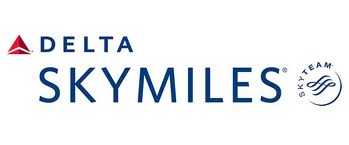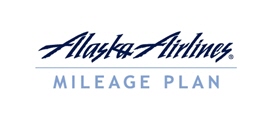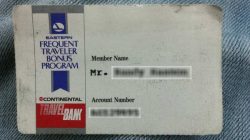First, let’s talk about what kind of traveler you are. There are three types of travelers:
- The Casual Travelers.
- The Business Travelers.
- The Frequent Travelers.
The Casual Travelers: The casual travelers will travel for fun and leisure. They travel two or three times a year and will choose the airline with the cheapest ticket for their trip. These travelers will not attempt to stick with any particular airline or sign up for any of the FFP because they “don’t travel that much.” The casual travelers will most likely use a travel booking site such as Expedia or Travelocity and pay with a bank debit card or credit card that offers some sort of “cash back.” These travelers only care about the bottom line and finding the cheapest flight to their destination so they can “start their vacation,” is the most important factor.
The Business Travelers: These business travelers will most likely work in Sales or Operations for a large company. They travel frequently around the nation and internationally to meet with clients or conduct operations. Because the “Company” is paying for their trips, money is less important of a factor when purchasing flight tickets. They can afford to stay loyal to one (or two) particular airlines where they are rewarded for their loyalty and accrue tens of thousands of frequent flyer miles. These business travelers will always have top tier, elite status on those airlines and be rewarded with perks such as early boarding, upgrades to First Class and other benefits. These travelers will then use those accrued miles to redeem award flights for personal travel for themselves or a spouse.
The Frequent Traveler: These frequent travelers will travel for the love of traveling and will travel several times a year. Though, not as frequently as the business travelers, these travelers will travel enough to reach some sort of mid-tier, elite status for a particular airline. These frequent travelers are paying for their own trips and will do the most research to not only find the cheapest flights, but also find the best flight on the best airline for their trip.
The frequent travelers will take any advantage of every perk or deal they can get their hands on and will most likely have several airline or hotel branded credit cards in their wallets. These travelers genuinely love traveling and will do research on airlines, airplanes and airports, commonly referred to as “airplane porn.” Their goal is not only to travel to their destination, but also to make travel part of their vacation.
Clearly, this post is not intended for the business or frequent travelers. They already know which airline FFP to belong to and have picked those to suit their individual travel needs. This post is intended for the casual traveler, the person that only travels a few times a year or maybe even once a year. It doesn’t matter how little you travel, as long as you’re doing some sort of traveling, you should be taking advantage of an airline’s FFP. My goal for this post is to turn those casual travelers into smart travelers and this post will help you choose the best FFP to suit your travel habits.
Note: I am not including US Airways in this group because they will soon be part of American Airlines. Once the American Airlines/US Airways merger is completed, their combined frequent flyer program and operations will be operated under the American Airlines name. The current speculation is that their frequent flier programs will be merged sometime in early 2014 and their operations will be fully merged later after that. Until then, if you find yourself on a US Airways flight, you can either choose to have those miles accredited to a United Airlines Mileage Plus account (if you want to stay with Star Alliance) or keep them accredited to your US Airways account (if you want them to eventually become American Airlines miles).

United Airlines:
United Airlines’ frequent flier program is called United Mileage Plus. United Airlines is the largest airline in the world and is part of the largest airline alliance, Star Alliance. United Airlines has hubs and is located at key airports including: Chicago, Denver, Los Angeles, Houston, Newark, Washing D.C., and many others. And as a Star Alliance member, they are allied with many key international airlines such as Lufthansa, Singapore Airlines, South African Airways, Air New Zealand and others, making them the most accessible airline alliance to the rest of the world. There’s really not a place in the world you can’t get to on United Airlines or with any of their partner airlines.
United Airlines has some of the most generous routing rules for award redemption, such as travel from the US to Asia, via Europe, and allow up to one stopover and two open jaws, per award travel. I’ll have more information on stopovers and open jaws in a future post. United Airlines also does not charge any fuel surcharges on any of their award flights, either on United or on a partner airlines. Mileage Plus miles can be earned on United Airlines flights or partner flights. Mileage Plus miles expire in 18 months if there is no activity on the account. Refer to their Mileage Plus terms and conditions for more information.
It should be noted that United Airlines recently devalued their frequent flier program and is now considered by some, the worst frequent flyer program of the big three legacy carriers. For more information about their devaluation, you can click here.

Delta:
Delta’s frequent flier program is called Sky Miles. Delta is the second largest airline in the world and is part of the second largest airline alliance, Sky Team. Delta has hubs and is located in key airports including: Atlanta, Detroit, Los Angeles, Minneapolis, New York and others. And as a Sky Team member, they are allied with many international airlines such as Air France/KLM, Korean Airlines, Saudia, China Airlines, China Easter, China Southern (seeing a pattern?), and others. In terms of flights, Sky Team has the most flights for Asia.
Though more limited to the rest of the world than Star Alliance, if you live or travel to parts of the US such as Atlanta, Minneapolis or Detroit or travel frequently from the US to Asia, Delta Sky Miles would be your best choice to join. Delta Sky Miles can be earned on Delta flights and certain Sky Team partner airlines. Their terms and conditions are way more complicated than anyone else’s and they are more restrictive on how you can earn and use Sky Miles. Delta also imposes fuel surcharges on certain partner award flights. Because of that, Delta Sky Miles has been considered one of the worst FFP by frequent flyers. The great positive about Delta Sky Miles is that they do not expire. No account activity is required to maintain your miles. Your miles are your own and will never expire for inactivity. Refer to their terms and conditions for further information.

If you live or travel to Dallas, Miami or South America frequently, then American Airlines is your best bet. AAdvantage miles can be earned on American Airlines flights and on certain partner airlines (not as generous as United’s but less restrictive than Delta’s). American Airlines does impose hefty fuel surcharges on award redemption of their partner airlines. AAdvantage miles expire in 18 months if there is no activity on the account. Refer to their terms and conditions for further information.

Alaska Airlines:
Alaska Airlines’ frequent flier program is called Mileage Plan. Alaska Airlines is based in Seattle, Washington, and they really have the Pacific Northwest market covered. Alaska Airlines does not belong to any specific airline alliance but they do have reciprocal agreements with many airlines including: American Airlines, Delta, AeroMexico, Air France/KLM, British Airways, Cathay Pacific, Emirates, Korean Air, Qantas, and others.
So what does that mean? It means that flights on Alaska Airlines or any of those other airlines will accrue both miles for elite status and award travel. Only travel once on American and another time on British Airways? Don’t have your miles go to those individual accounts, you can combine them into your Alaska Airlines Mileage Plan and build up award miles faster! Those same award miles can then be used to book award travel on Alaska Airlines or any of their partner flights. However, fuel surcharges are imposed on certain partner award flights so check before booking.
And here’s the best part, if you accrue enough elite miles to qualify for Mileage Plan elite status, those benefits will apply over to American Airlines and Delta as well! So if you travel infrequently with those three airlines, it’s probably best to bank them into Alaska’s Mileage Plan plan and build up enough miles for award redemption sooner. Obviously, certain restrictions apply and not all flights count so be sure to check out their terms and conditions for more information.
Conclusion:
So as you can see, there are many options for you depending on your travel needs. There are many programs with many benefits and it can be a little daunting to tackle by yourself. But the point that I want to stress is, no flight you take should go unclaimed. No matter how infrequent you think you travel, those miles still add up and you should be rewarded for putting your butt in that seat.
When you look at your travel habits, you’ll actually be surprised about how much you travel. All you need is some account activity to keep your miles active and free from being expired. That can include flights, airline partner flights, hotel partner stays, credit card spending (with an airline branded credit card), or even shopping for the things you already shop for through the airlines online shopping portals. They make it really easy for you to save your miles, so take advantage of it.
For those of you still confused from all the information, feel free to send me a note and we can help you choose the best program for you.
Safe Travels.

